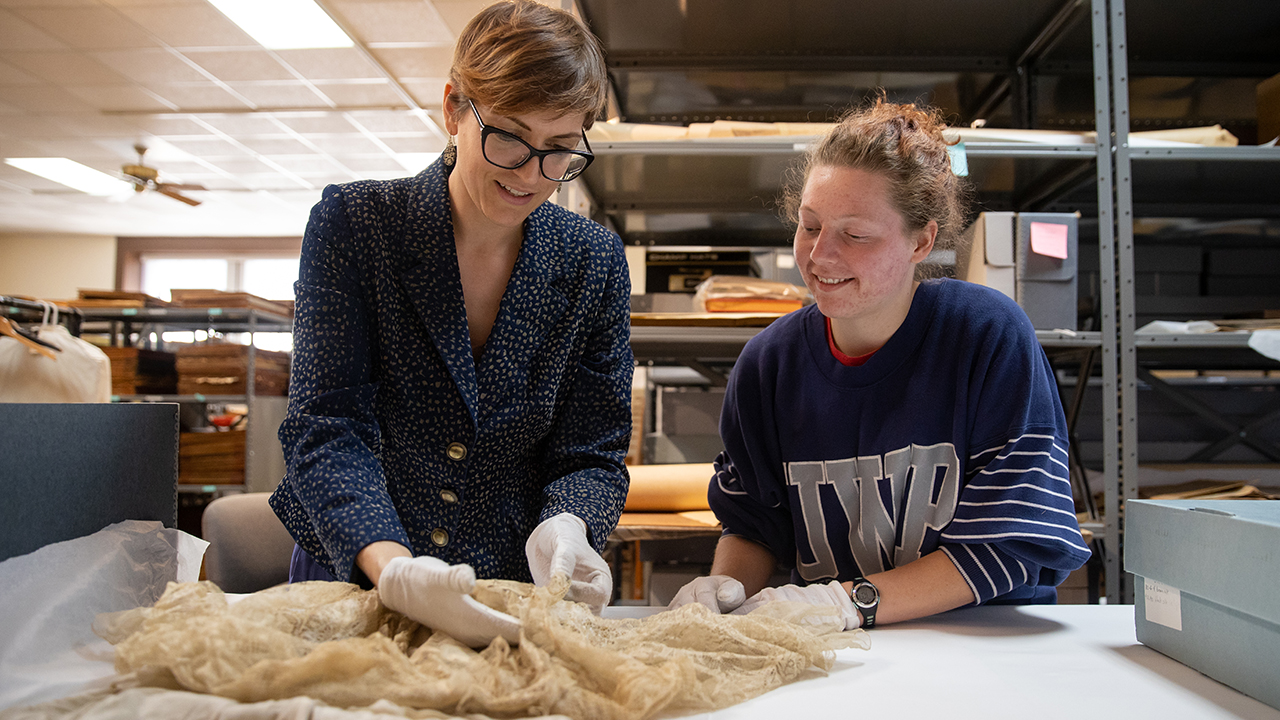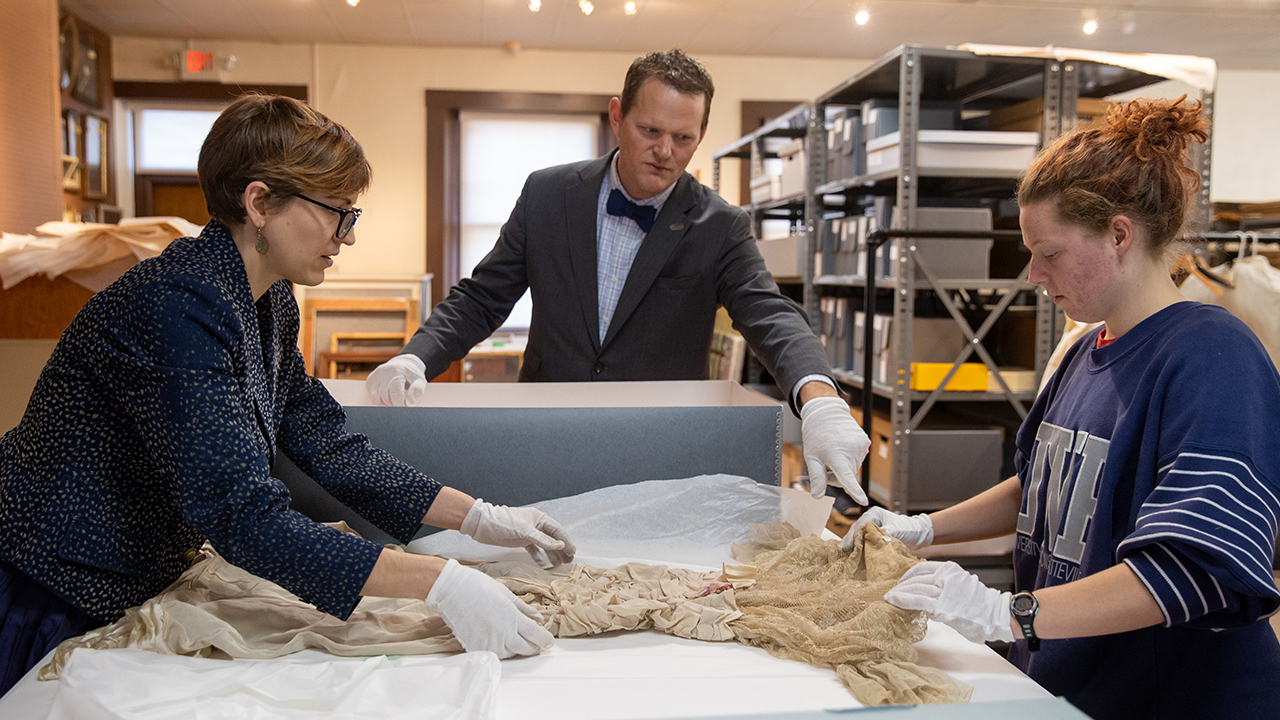In a collaboration between the theatre program and history department, one University of Wisconsin-Platteville student recently had the opportunity to recreate a historical garment by researching 19th century American fashion using primary and secondary written sources, as well as the artifact collection at The Mining and Rollo Jamison Museum.
Last semester, Emma Larsen interned for Pioneer Players with Sarah Strange, senior lecturer in performing and visual arts at UW-Platteville and costume director and designer. Strange and Dr. Eugene Tesdahl, associate professor of history, collaborated on a hands-on approach to teaching by leading an independent study course with Larsen.
"I was excited to guide Emma in her study of textual documents and historical objects," said Tesdahl.
UW-Platteville’s fall production of “Our Town” was set at the turn of the century, allowing for Strange to design one of the costumes around the pieces she and Larsen found in the museum. Larsen learned how to re-size the garment for the actor’s measurements and learned finishing details, like pin tucks, to make the costume look authentic.
“This was an incredible opportunity for Emma to investigate the original garment from the early 1900s,” said Strange. “There is no better way to examine historical clothing than to experience the process of recreating its construction. You can glean so much from the people who wore the clothing by investigating its details and the way they built their clothing.”
When she started studying history at UW-Platteville, Larsen really wanted to find a way to combine the three things she is most passionate about – history, textiles and understanding people’s cultures and the way they choose to live their lives.
The project was an opportunity for Larsen to gain experience researching textiles.
“Studying textile history has given me the opportunity to learn things like ‘why is ceremonial clothing in the southern part of China so different from the northern part?’” said Larsen. “It’s the history of the people and the various relationships they had and resources they had. It’s very visual through textiles, and I feel that’s the part of history people miss out on when they get the words without being able to see the clothing.”
Larsen hopes to get a master’s in textile preservation, and this research experience provided a solid foundation.
“I've been lucky to know two wonderful professors who are working with me,” said Larsen, a history major with a sociology minor. “Neither Sarah Strange nor Dr. Gene Tesdahl have worked in textile preservation, but Tesdahl is experienced with public history and Strange has done a number of excellent shows with historic clothing in them. They are both extremely knowledgeable and pleasures to work with.”
Larsen said she is appreciative that UW-Platteville’s classes are structured to help students find and make the most of unique opportunities.
“I already would’ve worked on these dresses, maybe even would’ve made that dress, but the fact that I got to build it from the ground up from a museum piece has a different effect than building it as it was,” said Larsen. “It means a lot to me when students who have opportunities get reminded that they should be pursuing them. That’s what these courses did for me. They’re a reminder that any person who is passionate about something and has it in their lives will be presented with opportunities that they don’t always think of. I love to sew. I put myself in a place to sew and got this opportunity because of it. I love history. I put myself in the history program. It had an opportunity there.”
“I'm so proud of this collaboration between theatre and history that we were able to tailor to Larsen who has a strong interest in furthering her studies in textile conservation and historical garments,” said Strange. “She was able to bring together her passions in sewing and history and also serve the greater purpose of storytelling on the stage.”


